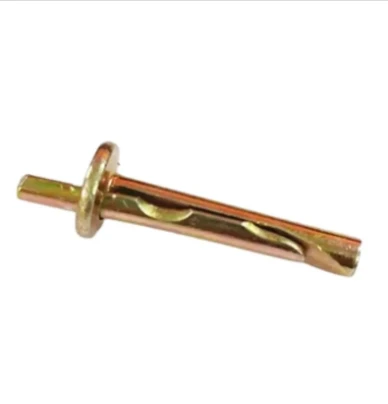11월 . 20, 2024 11:57 Back to list
types of clamps used in jig and fixture
Types of Clamps Used in Jigs and Fixtures
Jigs and fixtures are essential tools in manufacturing and assembly processes, designed to enhance productivity, improve accuracy, and ensure repeatability. Central to the functionality of jigs and fixtures are clamps. Clamps serve to hold workpieces securely in place, allowing for precise machining, welding, or assembly tasks. With various designs tailored to specific applications, understanding the types of clamps used in jigs and fixtures is crucial for engineers and manufacturers. This article explores several types of clamps, their applications, and their advantages.
1. C-Clamps
C-clamps, named for their C shape, are among the most common types of clamps used in jigs and fixtures. They consist of a fixed arm and a movable arm that is tightened using a screw mechanism. C-clamps are versatile and can accommodate a variety of workpiece sizes. Their primary advantage is their ability to apply significant pressure, making them ideal for holding materials steady during drilling or welding operations. However, their setup time can be longer compared to other clamping methods, which may hinder efficiency in high-volume production environments.
2. Toggle Clamps
Toggle clamps are renowned for their quick and easy operation. They feature a mechanism that enables the clamp to lock in place with minimal effort, making them ideal for repetitive tasks. Toggle clamps come in various designs, such as horizontal, vertical, and push-pull types, allowing them to be adapted to different configurations of jigs and fixtures. Their strong clamping force and rapid release capability make toggle clamps particularly popular in assembly lines where speed and accuracy are paramount.
3. Pneumatic Clamps
Pneumatic clamps utilize compressed air to create clamping force, which results in quicker setups and releases compared to manual clamps. They are especially effective in high-speed production environments where efficiency is critical. Pneumatic clamps can operate independently or be integrated into automated systems, providing consistent pressure across multiple workpieces. However, their reliance on compressed air systems requires proper maintenance and may involve a higher initial investment.
types of clamps used in jig and fixture

Mechanical clamps, built with a lever or screw mechanism, are widely used for both simple and complex fixtures. They provide a robust clamping solution, making them suitable for heavy-duty applications. Designs like screw clamps and lever clamps enable users to apply significant force to hold the workpiece securely. Though mechanical clamps require manual adjustment, their simplicity and reliability are unmatched in many situations, especially for tasks involving larger or heavier materials.
5. Vacuum Clamps
Vacuum clamps use suction to hold flat or smooth surfaces, making them excellent for applications involving panels, glass, or sheet materials. This type of clamping is particularly advantageous in woodworking, sign making, and machining where traditional clamping methods may leave marks on the workpiece. Vacuum clamps can be adjusted quickly and can hold multiple pieces simultaneously without obstructing access to the work area. Their biggest limitation, however, is that they may not be suitable for heavily textured or porous materials.
6. Magnetic Clamps
Magnetic clamps leverage the force of magnets to hold ferrous workpieces in place. They are advantageous for tasks that require quick changeovers and setups, as they engage and disengage with ease. Magnetic clamps are particularly beneficial in welding applications, allowing for unobstructed access to the weld area. Their main drawback is that they can only be used with magnetic materials, making them unsuitable for non-ferrous metals or materials.
7. Strap Clamps
Strap clamps are versatile tools that provide a secure hold around the workpiece while distributing pressure evenly. They typically consist of a strap or band, adjustable to accommodate varying sizes and shapes. Strap clamps are often used in woodworking or for holding assemblies together without marring the surface. Although they provide uniform pressure, they can be slower to set up than other types, which may limit their use in fast-paced environments.
Conclusion
The choice of clamp in jigs and fixtures significantly influences overall productivity, accuracy, and efficiency in manufacturing. Understanding the characteristics, advantages, and potential limitations of different clamp types—such as C-clamps, toggle clamps, pneumatic clamps, mechanical clamps, vacuum clamps, magnetic clamps, and strap clamps—enables manufacturers to select the right clamping solutions for their specific needs. By optimizing clamping methods, companies can enhance their production capabilities and improve the quality of their final products.


